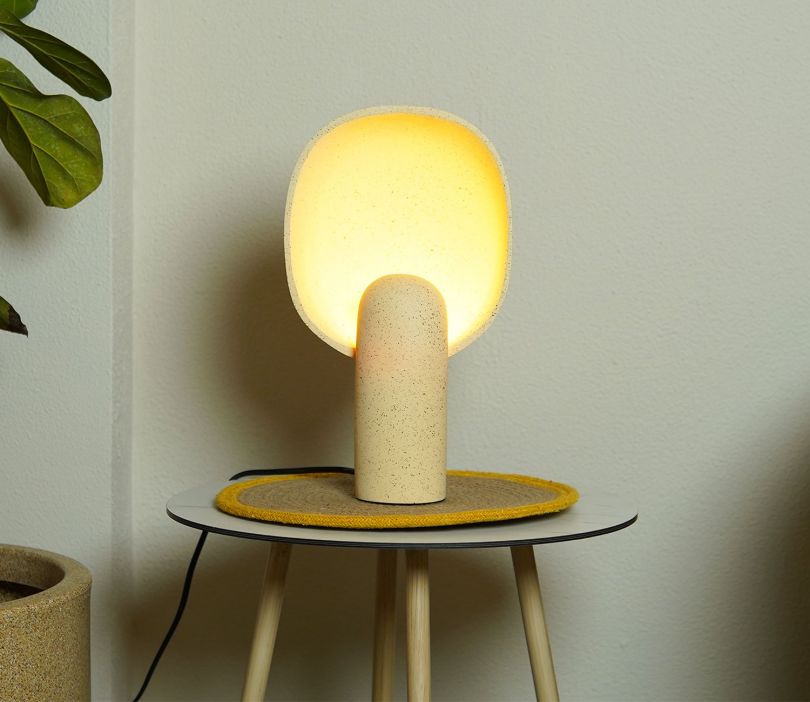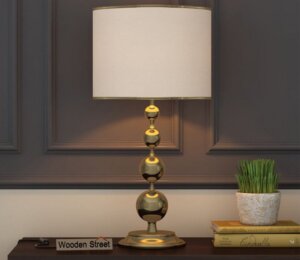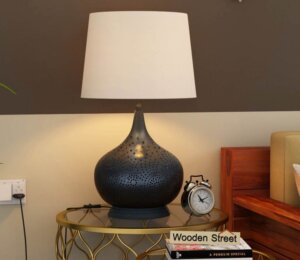
Lighting plays a pivotal role in how we experience a living space, and in the living room—arguably the heart of the home—it becomes even more essential. Among the many types of lighting options, table lamps stand out for their versatility, charm, and functional appeal. Whether you’re reading, relaxing, or entertaining guests, the right table lamp can instantly enhance your ambiance and tie your living room décor together.
Let’s explore how to choose the right table lamp for your living room setup, including tips on style, size, placement, and purpose.
Why Table Lamps Are More Than Just Lights
A table lamp is more than a simple lighting device—it’s an expression of style and a key part of the overall interior design. Unlike ceiling lights that provide broad illumination, table lamps offer targeted, ambient lighting that helps create cozy corners, reading nooks, or mood lighting for evening gatherings.
Table lamps also allow you to layer your lighting. Layered lighting adds depth and dimension to your space by combining ambient (general), task (focused), and accent (highlight) lighting. A well-placed table lamp contributes to all three, depending on its placement and bulb type.
Key Factors to Consider When Selecting a Living Room Table Lamp

Choosing a table lamp requires attention to both aesthetics and practicality. Here are the primary factors to evaluate:
1. Purpose of the Lamp
Understanding the primary function of the lamp helps narrow down your options.
-
Task Lighting: If you need a lamp for reading or working on a hobby, go for one with a directed beam and high brightness. Adjustable arms and focused light shades work best here.
-
Ambient Lighting: For soft, overall lighting, pick a lamp that emits a warm glow through a fabric or frosted glass shade.
-
Accent Lighting: Use decorative table lamps to highlight artwork, houseplants, or architectural elements in the room.
2. Size and Scale
A common mistake is choosing a lamp that’s too large or too small for the table it sits on. A well-proportioned lamp should complement the furniture rather than overpower or disappear in it.
-
Height Tip: When seated, the bottom of the lamp shade should be at eye level to prevent glare.
-
Width Tip: The lamp base should not exceed the width of the table, and there should be ample space around it for other essentials.
3. Lamp Shade Design
The lamp shade affects both the aesthetics and the type of light emitted. Consider these options:
-
Drum Shades: Modern and sleek, suitable for evenly distributed light.
-
Empire Shades: Classic and wider at the base, ideal for traditional décor.
-
Cone Shades: Best for directing light downward, perfect for task lighting.
Shade materials also make a difference:
-
Linen or Cotton: Soft, diffused glow.
-
Silk or Velvet: Luxurious and elegant.
-
Metal or Glass: Bold statement pieces that may direct more focused light.
4. Style and Material
The lamp’s design should blend with your living room’s theme. Think of the lamp as an extension of your furniture and décor.
-
Contemporary Spaces: Look for geometric shapes, metallic finishes, and neutral tones.
-
Bohemian Settings: Opt for hand-painted bases, natural materials like jute, and colorful shades.
-
Rustic Decor: Wooden or wrought iron bases with warm-toned shades work beautifully.
-
Traditional Rooms: Ceramic bases with ornate details and classic pleated shades are ideal.
Smart Placement Tips for Table Lamps in the Living Room
Placement is as important as the design. Strategic positioning ensures the lamp contributes to both form and function.
-
On End Tables: Placing lamps on side tables next to a sofa offers focused reading light and balances the room visually.
-
On Consoles or Buffets: Ideal for ambient lighting or decorative flair behind a sofa or along a wall.
-
In Corners: Adding a table lamp to a dim corner can brighten up the space and make the room feel larger.
-
Next to Artwork or Plants: Highlight specific decorative elements to draw the eye and create visual interest.
Choosing the Right Bulb for Your Table Lamp

The bulb you choose affects the color temperature, brightness, and energy efficiency of your lamp.
-
LED Bulbs: Long-lasting, energy-efficient, and available in a range of color temperatures.
-
Warm White (2700K–3000K): Ideal for cozy, ambient lighting.
-
Cool White (4000K–5000K): Suitable for reading and task lighting.
-
Smart Bulbs: Let you control brightness, color, and scheduling through apps or voice assistants.
Always check the lamp’s wattage rating before choosing a bulb, especially if it has a dimmer switch.
Trendy Table Lamp Styles for Living Rooms
Here are a few popular trends you can explore:
-
Minimalist Lamps: Clean lines, monochrome finishes, and functional designs.
-
Sculptural Lamps: Artistic bases that double as décor objects.
-
Glass Lamps: Transparent or frosted glass offers elegance and lightness.
-
Industrial Designs: Exposed bulbs, metal cages, and matte finishes give a raw, edgy look.
You can even mix and match lamp styles within the same room to create a curated, collected aesthetic.
Maintenance and Safety Tips
-
Dust the lamp base and shade weekly to prevent buildup and maintain appearance.
-
Secure the lamp’s cord to avoid tripping hazards.
-
Use surge protectors if you’re plugging in high-wattage bulbs or smart lamps.
-
Switch off the lamp when not in use to preserve bulb life and conserve energy.
Conclusion
A table lamp is a subtle yet powerful element in your living room. It not only illuminates but also enhances your decor, defines zones, and adds character to your setup. From choosing the right height and shade to understanding bulb efficiency and placement, there are several aspects to consider. With thoughtful selection, the right table lamp for your living room can turn a basic area into a stylish, well-lit retreat.




